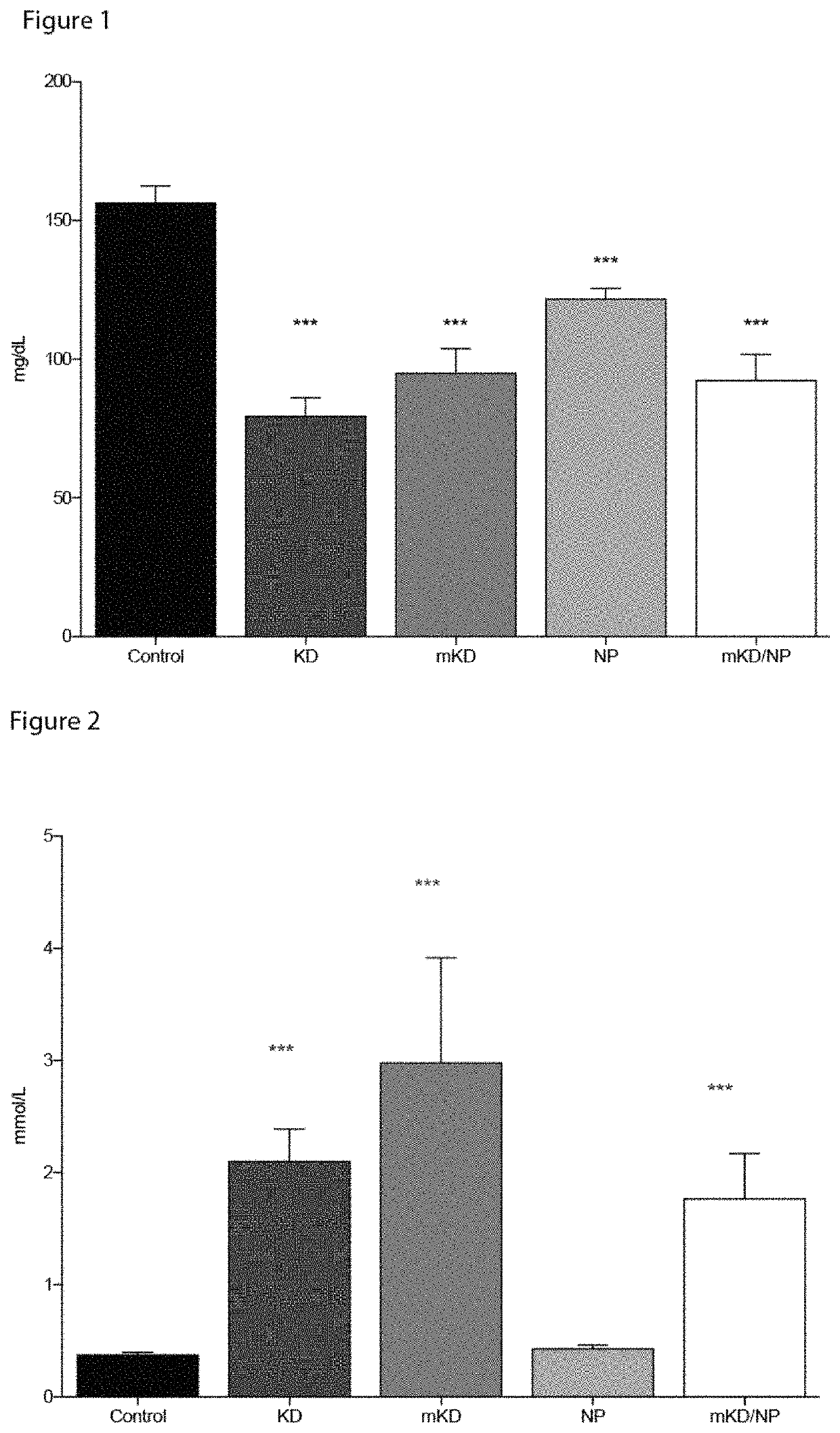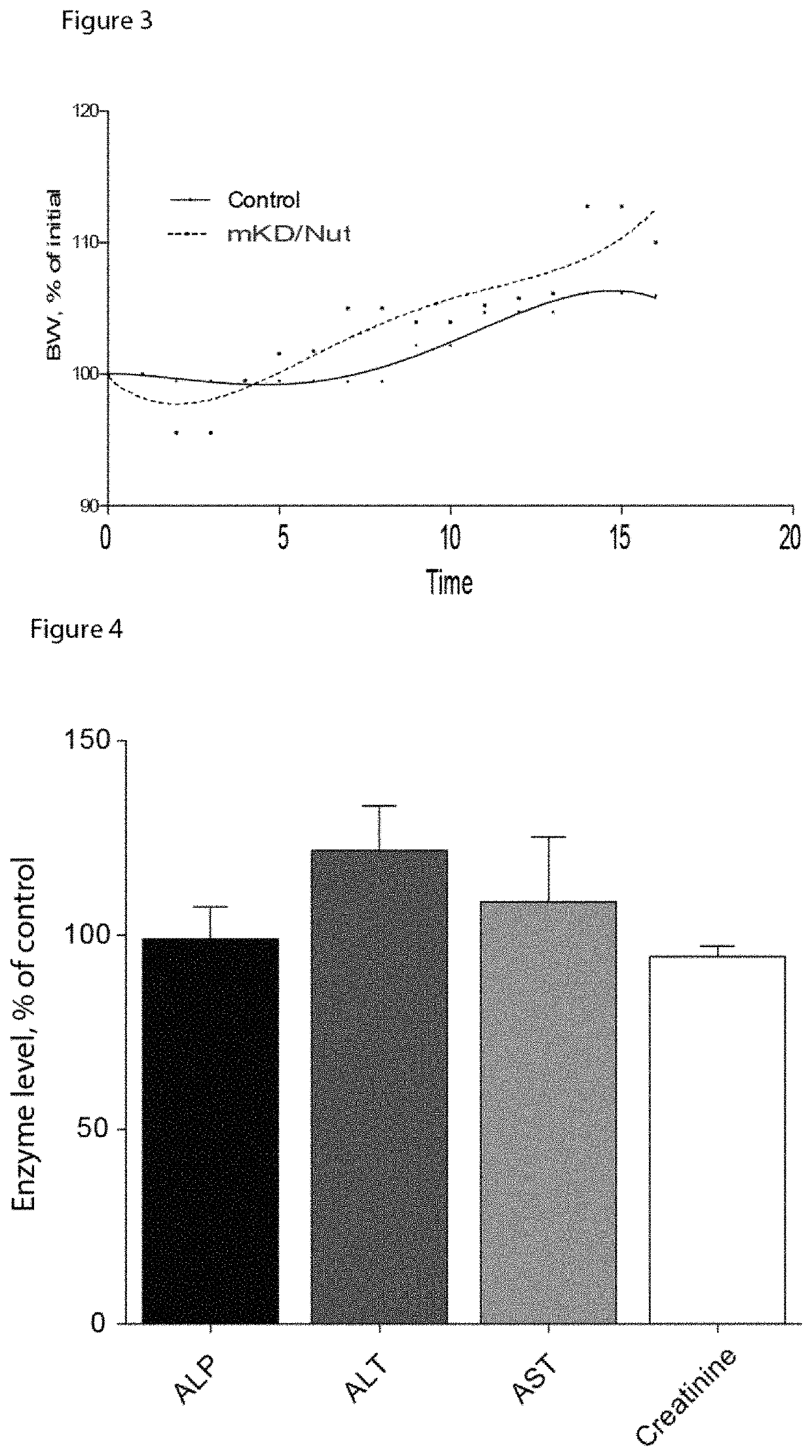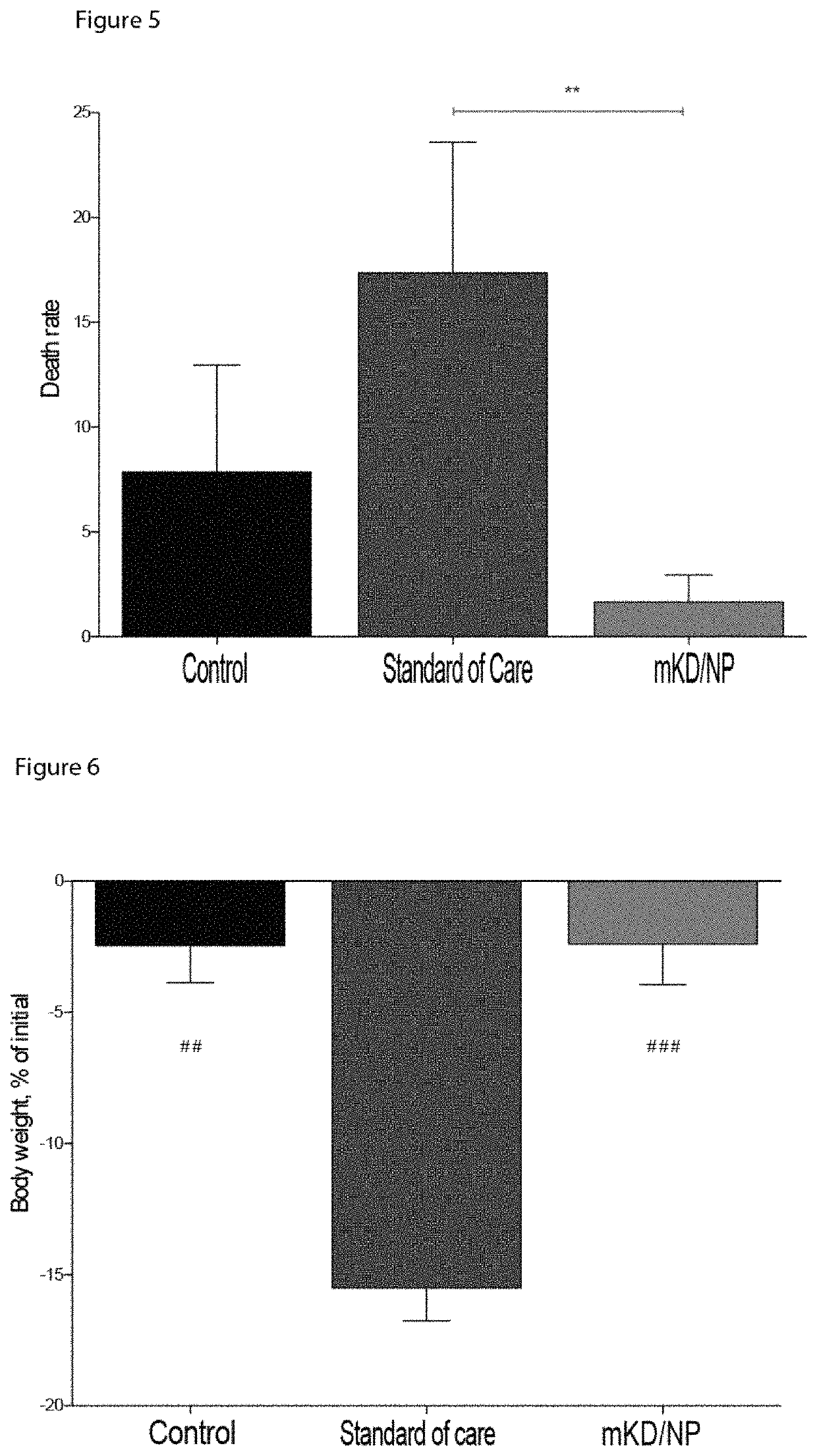Regulation of cancer using natural compounds and/or diet
a cancer and natural compound technology, applied in the direction of drug compositions, plant/algae/fungi/lichens ingredients, cardiovascular disorders, etc., can solve the problems of similar effects on normal, non-cancerous cells, and cancer cells that expend an enormous amount of glucose to survive and multiply, so as to reduce the loss or proliferative ability of neural stem cells, attenuate/reduce the loss of precursor cells activity, and low carbohydrate diet
- Summary
- Abstract
- Description
- Claims
- Application Information
AI Technical Summary
Benefits of technology
Problems solved by technology
Method used
Image
Examples
example 1
ied Ketogenic Diet [mKD] Alters Glucose and Ketone Levels to the Same Extent as the Ketogenic Diet [KD]
[0096]NOD-SCID animals were placed on a KD or mKD or mKD+EDP for two weeks. The compositions of the diets are as follows (expressed as percentage of calories):
[0097]Control diet: Is a standard mouse chow and is composed of 55% carbohydrate, 30% protein, 15% fat.
[0098]KD: 92% Fat, 3% carbohydrate, 5% protein.
[0099]mKD: 10% carbohydrate, 60% Fat (half coming from medium chain triglycerides [MCT, Neobee 598]), 30% Protein.
[0100]NP diet: 55% carbohydrate, 30% protein, 15% fat+Sulforaphane (SFN; 25 mg / kg; BSP95% / DRSP5%), Curcumin (1200 mg / kg), EGCG (1200 mg / kg).
[0101]mKD / NP: 10% carbohydrate, 60% Fat (half coming from medium chain triglycerides [MCT, Neobee 598]), 30% Protein+SFN (25 mg / kg; BSP95% / DRSP5%), Curcumin (1200 mg / kg), EGCG (1200 mg / kg).
[0102]Ten animals, in each dietary group, were placed on the modified diet for 2 weeks at which point tail tip method was used to collect bloo...
example 2
P Diet is Safe and has No Signs of Toxicity
[0104]The vast majority of cancer therapeutics has dose-limiting toxic side effects that impact not only a patient's well-being but it also results in suspended treatments and reduced dosages that can impact treatment efficacy. One of the best indicators of overall health in a rodent is its body weight [this is true in human patients as well]. NOD-SCID animals received 1M GB cells [patient derived lines] into the right flank. Animals were monitored 3 times per week for signs of tumor formation. Once a tumor was identified [by palpation & approximately 65 mm3]] animals were randomly assigned to 1 or 2 groups: [1] Control diet or [2] mKD / NP diet. Body weight was monitored 3 times per week. FIG. 3 depicts percentage change in body weight till the first control animal reached endpoint [16 days]. While the mKD / NP group initially lost weight over the first few days [due to adjusting to a new diet], they quickly recovered the lost weight and conti...
example 3
n of Safety Between Standard of Care [SOC] Vs. mKD / NP
[0111]The first line chemotherapy for high grade gliomas is temozolomide [TMZ], which is an oral alkylating agent that damages DNA and triggers cell death. While TMZ is an effective chemotherapy agent it also has significant toxicity. Using the same subcutaneous model as noted in example 2, at the time of tumor presentation animals were randomly assigned to one of three groups: [1] control diet, no treatment; [2] control diet, SOC [TMZ, 20 mg / kg three times / week]; [3] mKD / NP diet. We analyzed the number of animals that died as a result of non-tumor related causes and noted that SOC treatment resulted in an increase in mortality compared to the untreated controls [FIG. 5]. A similar increase in mortality was not seen in the mKD / NP group, where the death rate was not statistically different than the controls but was significantly lower than the SOC group.
[0112]While receiving SOC treatment, body weight was measured and not surprisin...
PUM
 Login to View More
Login to View More Abstract
Description
Claims
Application Information
 Login to View More
Login to View More - R&D
- Intellectual Property
- Life Sciences
- Materials
- Tech Scout
- Unparalleled Data Quality
- Higher Quality Content
- 60% Fewer Hallucinations
Browse by: Latest US Patents, China's latest patents, Technical Efficacy Thesaurus, Application Domain, Technology Topic, Popular Technical Reports.
© 2025 PatSnap. All rights reserved.Legal|Privacy policy|Modern Slavery Act Transparency Statement|Sitemap|About US| Contact US: help@patsnap.com



